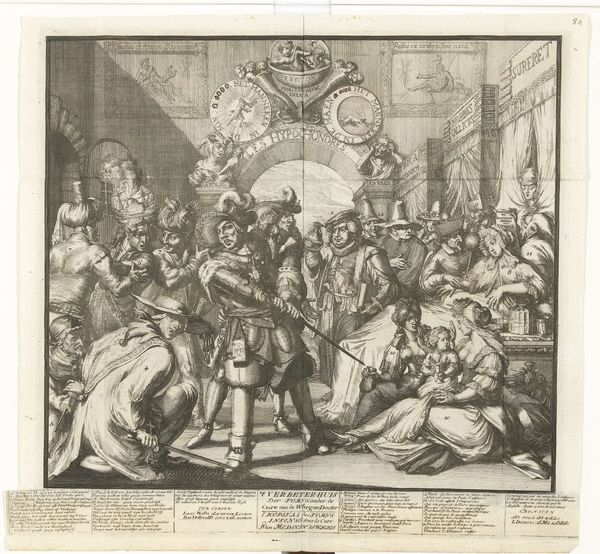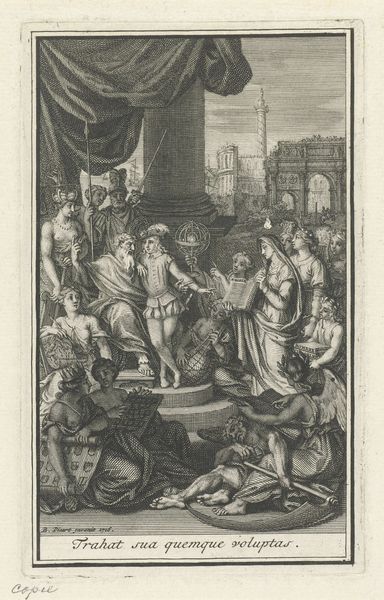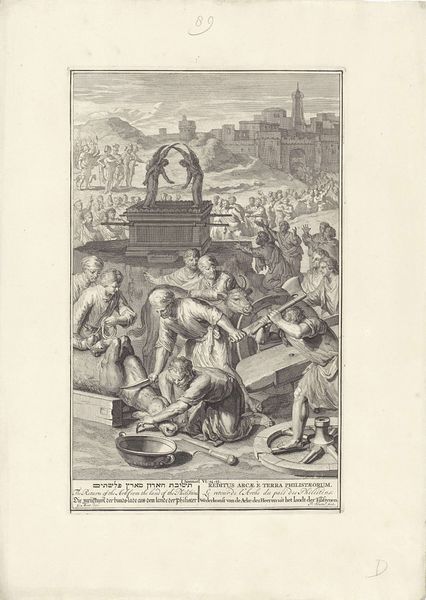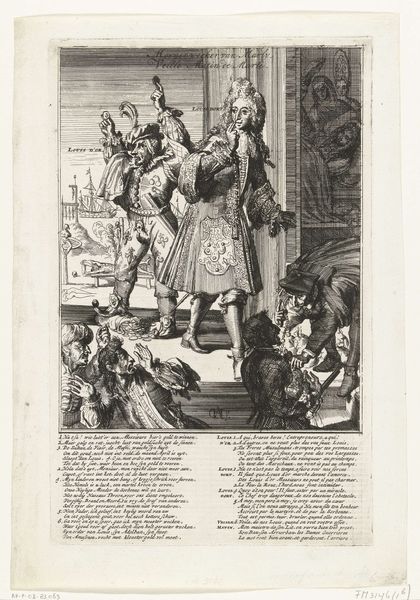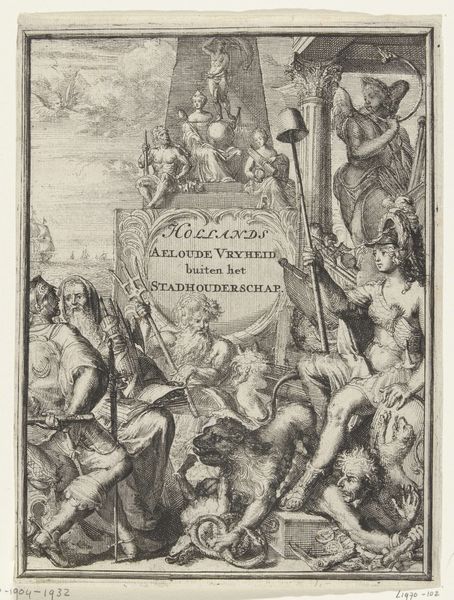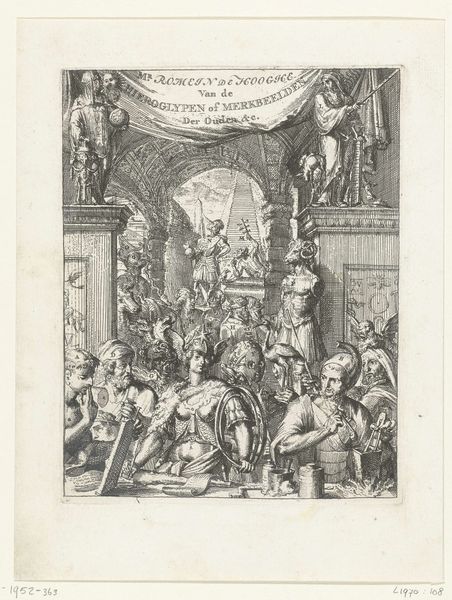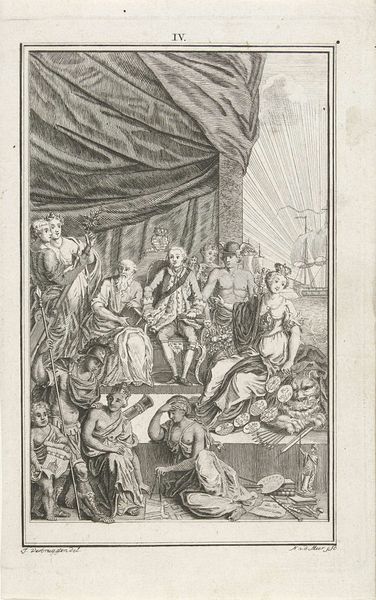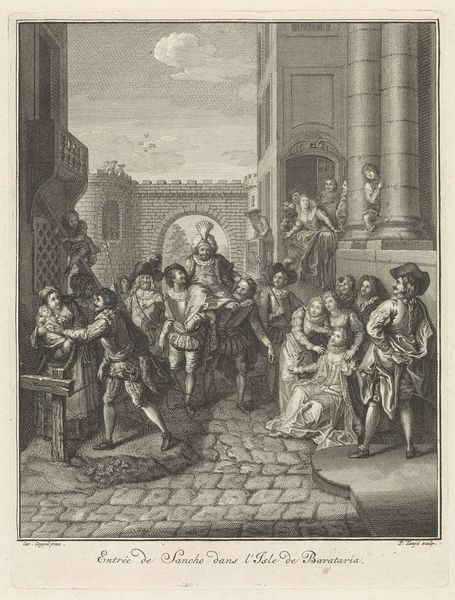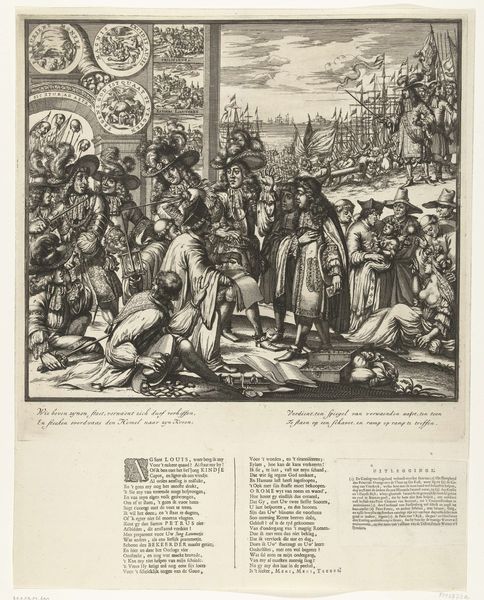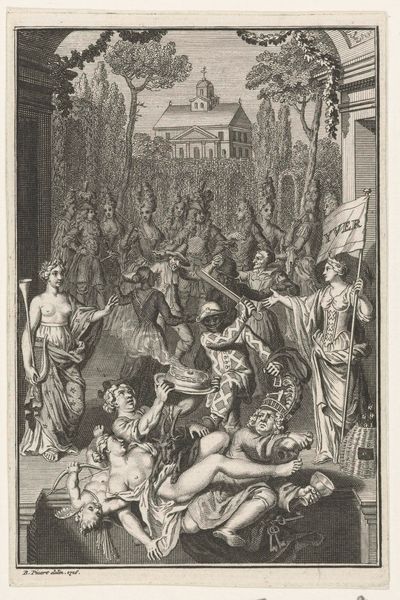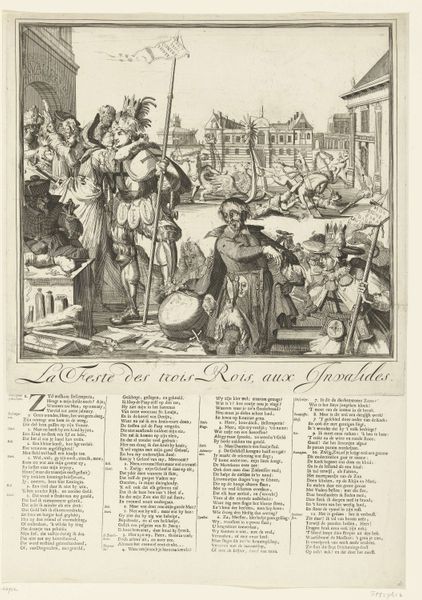
Spotprent op de onenigheid tussen Willem III en Amsterdam, 1690 1690
0:00
0:00
romeyndehooghe
Rijksmuseum
print, engraving
#
narrative-art
#
baroque
# print
#
caricature
#
engraving
Dimensions: height 564 mm, width 418 mm
Copyright: Rijks Museum: Open Domain
Curator: The "Spotprent op de onenigheid tussen Willem III en Amsterdam, 1690," created by Romeyn de Hooghe, presents us with an incredibly detailed commentary on the political climate of that year. It’s an engraving, a medium well-suited for disseminating such pointed social critiques. Editor: My first impression is utter chaos. It's teeming with figures, all rendered in this intense, almost frantic Baroque style. There’s so much to unpack just visually. Curator: Indeed, De Hooghe used caricature to expose and amplify the discord between William III and Amsterdam. This wasn’t merely a personal disagreement; it was a clash of ideologies and power structures between the Stadtholder and the powerful merchant class of Amsterdam. Editor: I’m immediately drawn to the figures in the foreground. Some seem defeated, others oblivious to the mayhem surrounding them. There’s a pervasive sense of disorientation. What symbols recur, or perhaps get distorted here? Curator: The symbolism would be apparent to contemporary viewers steeped in Dutch political rhetoric. William III would be represented by certain visual cues, perhaps references to the House of Orange, and Amsterdam itself would likely be symbolized by the Virgin of Amsterdam. This allows a wider discourse about civic authority to be established within cultural consciousness. Editor: The overall impression is of societal disarray, as reflected in the faces and gestures. The distortion could represent fear or uncertainty as seen through the use of recurring figures. It definitely conveys a sense of upheaval and instability in society. Curator: Absolutely. Consider that in 1690, the Dutch Republic was navigating a precarious position in European power dynamics. These conflicts within shaped its trajectory and this engraving captured and broadcast it for public consideration, playing a role in that trajectory itself. Editor: Seeing it through that lens gives the scene even more depth. This isn't just political theater; it is political analysis. It serves as a powerful historical tool that extends to this very day. Curator: Precisely, a vital reminder of the role art plays in social and political dialogues across the ages.
Comments
No comments
Be the first to comment and join the conversation on the ultimate creative platform.

